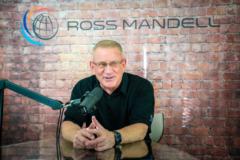Aug 8 • General discussion
Too Late, Too Political: Jerome Powell is the Worst Fed Chair Ever
Let me tell you something about history, it’s not sentimental. It doesn’t hand out gold stars because you smiled nice for the cameras or gave calm, measured press conferences. History is a brutal scorekeeper. And when it finally catches up with Jerome Powell, the verdict’s gonna be ugly.
The media may dress him up as a “steady hand” or a “pragmatic leader who wasn’t an economist.” Spare me. Powell’s legacy will be one of the most damaging, reactive, and politically pliant in Federal Reserve history. His time in that chair has been defined not by courage or vision, but by delay, political winds, and mistakes so big they’ve warped markets, crushed credibility, and widened the canyon between Wall Street’s champagne towers and Main Street’s cracked sidewalks.
The Case of the Missing Backbone
From day one, Powell had a chance to show some guts, and he flinched. The late 2010s were a gift-wrapped opportunity. The economy was roaring, unemployment was at record lows, and the stock market was printing all-time highs like it was on autopilot. That’s when a real leader tightens the screws, raises rates, reins in speculation, and gets ahead of inflation.
But Powell? He sat on his hands. Inflationary pressure was building under the surface, but he didn’t want to upset the markets, or, God forbid, get political heat. By the time inflation exploded to 40-year highs in 2021 and 2022, it was too late. And when he did finally act, he slammed the brakes so hard the economy nearly went through the windshield.
Waiting too long, then overcorrecting, that’s not monetary strategy. That’s cowardice dressed up as caution.
The “Powell Put” , Wall Street’s Favorite Drug Dealer
Ever heard of the “Greenspan Put”? Back in the day, traders knew Alan Greenspan would rescue the market with cheap money anytime it sneezed. Powell took that playbook, added turbo, and turned it into the “Powell Put.”
In 2018, he briefly raised rates and trimmed the Fed’s bloated balance sheet. The market had a fit. And what did Powell do? He folded. By early 2019, he was reversing course under pressure from Wall Street, and from then-President Donald Trump.
Then came COVID. Look, I’ll give him this: the Fed had to step in. But Powell didn’t just step, he sprinted past reasonable and straight into reckless. Zero interest rates, buying corporate bonds, ETFs, junk debt, if it traded, Powell was buying it. It juiced the stock market, lit a fire under real estate, sent crypto into orbit, and left Main Street with an even bigger wealth gap and a new addiction to free money.
Political Winds, Monetary Sails
If Powell were just slow, maybe you could call him cautious. But his timing has too often mirrored whatever political pressure was hottest at the moment.
When Trump blasted him for being “too slow” to cut rates, Powell caved, even with a strong economy and low inflation. Fast forward to the Biden years: inflation surges, Powell drags his feet again, afraid a recession could hurt the administration.
You can’t claim to be apolitical while bending every time the political wind changes. You’re either independent or you’re a weathervane. Powell? He’s been a windsock in a hurricane.
Too Late to Hike, Too Early to Cut
Now here we are, mid-2025. Inflation’s still not fully under control, but Powell’s already teasing rate cuts. Why? Data? Or the urge to juice markets heading into another election season?
The markets have been trained to expect bailouts, liquidity, and low rates. Real economic growth, wages, productivity, actual investment, takes a backseat to keeping asset prices inflated. And Powell keeps feeding the addiction.
The Collapse of Credibility
The Fed’s most valuable asset isn’t its balance sheet, it’s its credibility. And Powell’s squandered it.
When he called inflation “transitory” in 2021, he either didn’t see the storm coming or hoped no one else would notice until it was too late. Both are disqualifying. Families saw their paychecks shrink. Businesses couldn’t plan. And trust in the Fed’s ability to steer the ship? Gone.
Credibility is like trust in business, once you lose it, you don’t just get it back with a couple of good quarters.
A Legacy of Reaction, Not Leadership
Let me be clear, Powell’s not evil. He’s not running some backroom scheme to take down America. But he is, without question, one of the most reactive Fed Chairs we’ve ever had. He’s let markets and politicians set the tempo instead of leading with a steady, independent hand.
Under his watch, the Fed hasn’t been a lighthouse, it’s been a buoy, bobbing around in political waves.
When history looks back, Powell won’t be remembered as a “steady hand.” He’ll be the guy who let bubbles inflate, then popped them with a hammer. The one who missed the early signs, then overcompensated in panic. The one who promised independence, then proved every critic right.
Final Word
The Federal Reserve’s history is full of giants, Paul Volcker, who had the guts to crush inflation in the early ‘80s. Ben Bernanke, who kept the Great Recession from becoming a depression. Leaders who made unpopular decisions because it was the right call.
Powell’s not making that list.
He’ll be remembered for what he didn’t do, when it mattered most. And when the history books close on this chapter, “steady hand” won’t be the headline. It’ll be “Too Late. Too Political. Too Weak.”
3
2 comments

skool.com/going-public-with-ross-mandell-7131
From wealth creation to personal empowerment - take control and begin living your best life today!
Powered by


